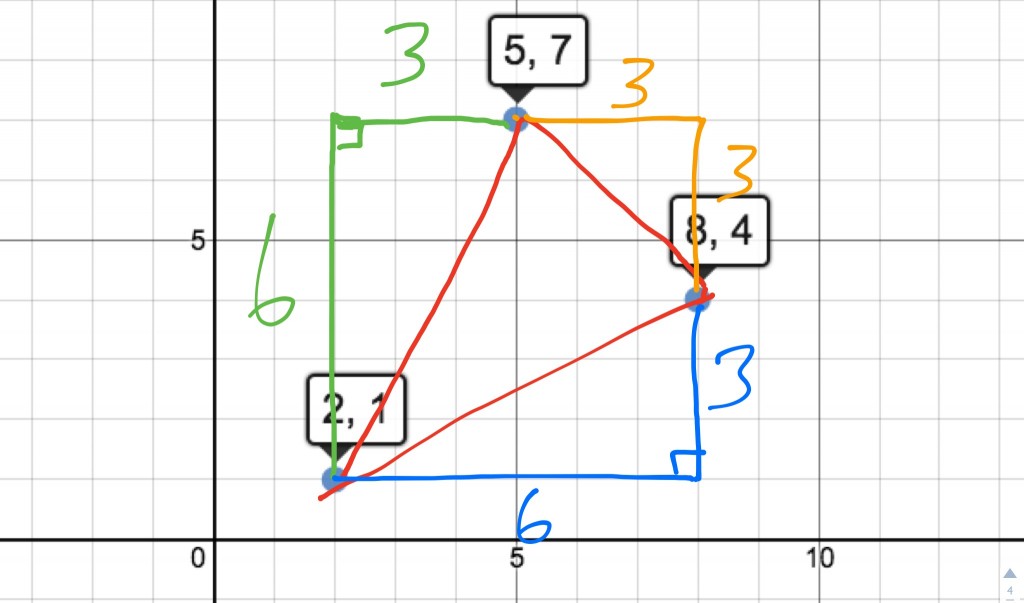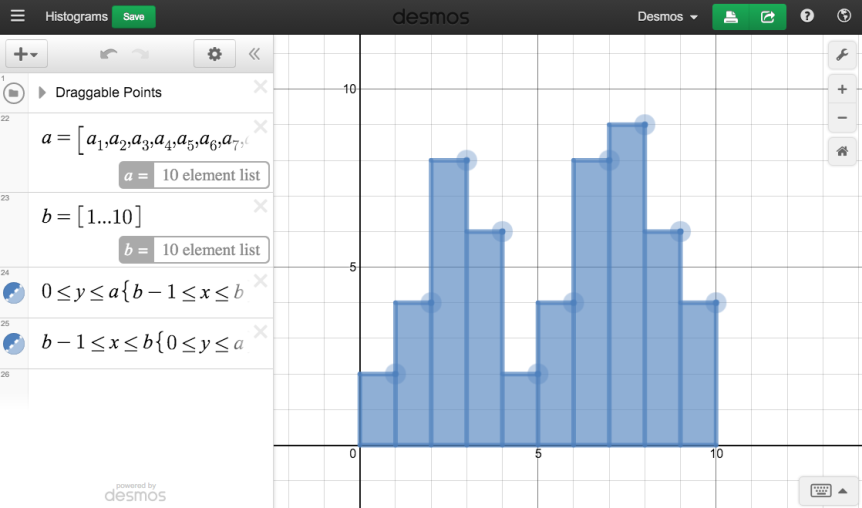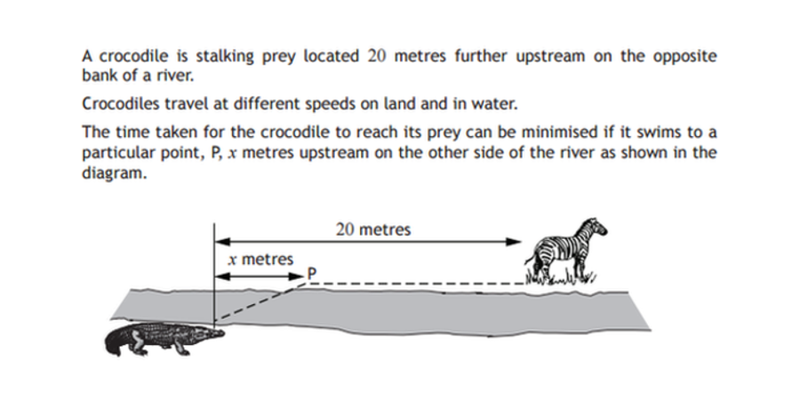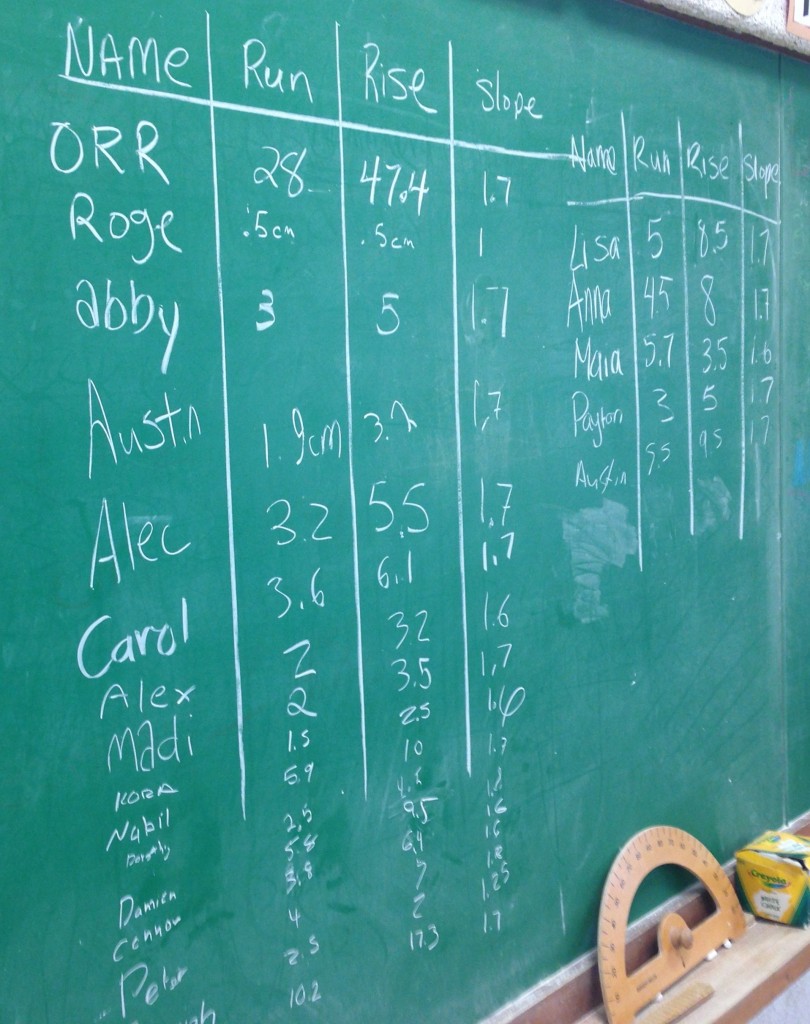 Desmos continues to add to the reasons I like them. First they make a damn fine graphing calculator, then they add activities on Teacher.desmos.com, then they let us create our own Polygraphs and then they create the Desmos Activity Builder. But now they have added a new piece to the Activity Builder site: A community. Last two weeks ago I shared a grass roots portal where teachers could share Desmos activities. Now Desmos has officially done it by allowing anyone who uses Desmos Activity Builder to make their creations public. So now when you go to teacher.desmos.com and you use the search at the top, you will get results from Desmos and results from the community. And one thing I like about this, at least for now, is that even though you might make your activity public, they are not available on the community search until the fine folks at Desmos have looked at it and "polished" it up. So unlike a lot of sharing sites, this is curated. Things are of the standard you would expect from Desmos. So take a look at the Desmos post on it (which includes the terms of service).
Desmos continues to add to the reasons I like them. First they make a damn fine graphing calculator, then they add activities on Teacher.desmos.com, then they let us create our own Polygraphs and then they create the Desmos Activity Builder. But now they have added a new piece to the Activity Builder site: A community. Last two weeks ago I shared a grass roots portal where teachers could share Desmos activities. Now Desmos has officially done it by allowing anyone who uses Desmos Activity Builder to make their creations public. So now when you go to teacher.desmos.com and you use the search at the top, you will get results from Desmos and results from the community. And one thing I like about this, at least for now, is that even though you might make your activity public, they are not available on the community search until the fine folks at Desmos have looked at it and "polished" it up. So unlike a lot of sharing sites, this is curated. Things are of the standard you would expect from Desmos. So take a look at the Desmos post on it (which includes the terms of service).Curriculum Tags: All
http://blog.desmos.com/post/132174749632/the-desmos-activity-builder-community
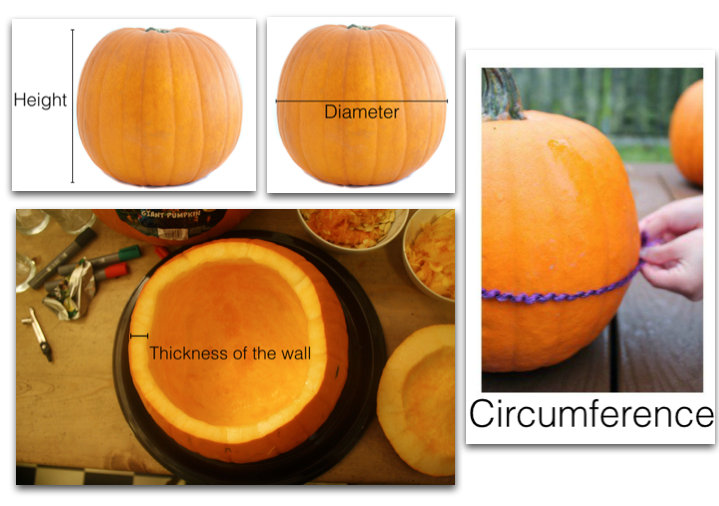 Of course it is Halloween this weekend and what is Halloween without exploding punpkins in the form of a throwback post from @mrorr_geek from last Halloween. Then he posted an activity based on trying to cut a pumpkin in half using elastic bands. Well he collected all kinds of data from classes from all over. And now you can use that data in your own classes. Probably best for any class dealing with linear regression.
Of course it is Halloween this weekend and what is Halloween without exploding punpkins in the form of a throwback post from @mrorr_geek from last Halloween. Then he posted an activity based on trying to cut a pumpkin in half using elastic bands. Well he collected all kinds of data from classes from all over. And now you can use that data in your own classes. Probably best for any class dealing with linear regression.Curriculum Tags: MPM1D, MFM1P, MDM4U, MAP4C
http://mrorr-isageek.com/pumpkin-time-bomb-activity/
 So there was a bit of a chain to get to this next activity. It is a card sorting activity for boxplots and histograms. I saw reference to it first on the Math = Love blog who referenced the the Teaching Stats blog who found the activity. So still not sure who made it but the Teaching stats blog is new to me so that makes this a double find.
So there was a bit of a chain to get to this next activity. It is a card sorting activity for boxplots and histograms. I saw reference to it first on the Math = Love blog who referenced the the Teaching Stats blog who found the activity. So still not sure who made it but the Teaching stats blog is new to me so that makes this a double find.Curriculum Tags: MDM4U
http://campus....../Matching%20cards%20activity.pdf
 And speaking of the Math = Love blog, I really like this simple visual for the five number summary. That is, make it a five finger summary.
And speaking of the Math = Love blog, I really like this simple visual for the five number summary. That is, make it a five finger summary.Curriculum Tags: MDM4U
http://mathequalslove.blogspot.ca/2015/10/5-number-summary-5-finger-summary.html
 I really like this investigation into the online movie site Fandango. They do a very good job of breaking down how Fandango's ratings come in consistently higher than every other movie rating site. I especially like the bit about how they constantly rounded up to the nearest half point (so 4.1 would round to 4.5). Read the article for all the details or listen to the What's the Point podcast for the interview with the writer. It's a really good example of using data to tell a story.
I really like this investigation into the online movie site Fandango. They do a very good job of breaking down how Fandango's ratings come in consistently higher than every other movie rating site. I especially like the bit about how they constantly rounded up to the nearest half point (so 4.1 would round to 4.5). Read the article for all the details or listen to the What's the Point podcast for the interview with the writer. It's a really good example of using data to tell a story.Curriculum Tags: MDM4U
http://fivethirtyeight.com/features/fandango-movies-ratings/
http://fivethirtyeight.com/datalab/rating-subjective-experiences-is-hard-but-fandango-is-really-bad-at-it/
 Want to lock down your iPads so that students can only use one app. Here are instructions that will let you do just that. Recently Desmos created a version of their app that would do just that, basically shut down the iPad to anything else (Internet included). But as it turns out, you can do this for any app. Check out this post to find out how.
Want to lock down your iPads so that students can only use one app. Here are instructions that will let you do just that. Recently Desmos created a version of their app that would do just that, basically shut down the iPad to anything else (Internet included). But as it turns out, you can do this for any app. Check out this post to find out how.Curriculum Tags: All
http://musingmathematically.blogspot.ca/2015/06/teacher-hack-ipads-in-exams.html?m=1
 I like this post from @MrSoclassroom where he talks about what it means to be a teacher. I especially like the bit about there being more to teaching then just telling kids what to do. Have a look at the full post here
I like this post from @MrSoclassroom where he talks about what it means to be a teacher. I especially like the bit about there being more to teaching then just telling kids what to do. Have a look at the full post herehttp://mrsoclassroom.blogspot.ca/2015/10/what-does-it-mean-to-be-teacher.html
Curriculum Tags: All
http://mr-stadel.blogspot.ca/2015/10/2015-ignite-at-nwmc.html
Cannot get enough of people making music from the digits of Pi
Curriculum Tags: All
https://www.youtube.com/watch?v=Bri_-x-ZMMA
And another one from @mr_stadel's Estimation 180 site. How many cheeseballs with cover the plate. Click through to the site for the video answer.
Curriculum Tags: Gr8, MPM1D, MFM1P
http://mr-stadel.blogspot.ca/2015/10/cheeseball-estimation-180.html
Some data on when you should stop trick or treating. They ask when should you and when did you. Could be good when talking about surveying.
Curriculum Tags: Gr7, Gr8, MBF3C, MDM4U
http://fivethirtyeight.com/datalab/heres-when-you-should-stop-trick-or-treating/
I saw this and thought it looked like geometric breathing
Curriculum Tags: All
http://33.media.tumblr.com/b1406ea40336dc68e5404b380c391d96/tumblr_nr5kks2QoA1tkg9nqo1_500.gif
OK, some of these I've seen but others I haven't. The ones I liked are below (but more at the link)
Curriculum Tags: All














